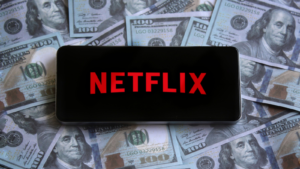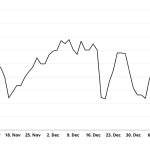
The stock market’s volatility this year is nothing new. Over the past three years investors saw the S&P 500 hit new all-time highs, partially thanks to the “Magnificent 7 stocks,” only to tumble sharply afterwards. Heck, since just the beginning of last year the benchmark index has dipped into bear market territory on three separate occasions.
Earlier this year Bank of America chief investment strategist Michael Hartnett coined the term Magnificent 7 stocks, a group of stocks that were almost wholly responsible for the market’s gains this year. Without their outsized performance, the S&P 500 would be flat.
Many of the original so-called FAANG stocks – Meta Platforms (NASDAQ:META), Amazon (NASDAQ:AMZN), Apple (NASDAQ:AAPL), Netflix (NASDAQ:NFLX) and Alphabet (NASDAQ:GOOG, NASDAQ:GOOGL) – made the cut of the Magnificent 7. Added to the list were Nvidia (NASDAQ:NVDA) and Tesla (NASDAQ:TSLA).
Yet where the FAANG group were stocks to buy, Hartnett was issuing a word of caution about the Magnificent 7. He warned they were the result of a “baby bubble” that could pop at any time because of interest rate hikes.
Since his investor note, however, most of the stocks continue outperforming the index. It’s possible they will fall flat now, but here are two Magnificent 7 stocks you should add to your portfolio this month and one you should avoid.
Meta Platforms (META)

Social media platform leader Meta is still one of the market darlings since Hartnett’s call. Shares are up 31% since May compared to a 3% gain by the index. In fact, the stock is up over 155% since the start of the year. That’s a stark reversal from the complete collapse it experienced last year.
Investors view Meta’s cost-cutting initiatives positively. After years of shoveling money everywhere, the owner of Facebook, Instagram, WhatsApp and Messenger finally realized that targeted spending was needed. With those apps having a combined 3.9 billion monthly active users, it is reaching about 60% of the global online population. Few companies have such reach and selectively going after them can yield tremendous results.
Despite Meta Platforms’ torrid growth in 2023, the stock is still relatively cheap. It trades at just 18 times next year’s earnings estimates, by far the lowest of any of the other Magnificent 7 stocks and equal to the S&P 500 as a whole. Wall Street also forecasts Meta will grow earnings at a 31% compounded annual rate for the next five years.
There is no reason to think the social media platform won’t continue on this long, upward trajectory it is traveling.
Alphabet (GOOG, GOOGL)

Alphabet is another cheap stock in the group with forward estimates of 20 times earnings. With expectations for profits to expand 18% annually long term, there’s plenty of growth on its plate, too.
Combined with Meta, Alphabet’s Google accounts for nearly half of the global ad spend online. The search engine still has the largest slice of the ad market with a 26% share worldwide. Just as important, Google remains the go-to search engine, owning internet search with a 91.6% share. With analysts debating whether we’re heading into a recession soon, Google’s market share superiority will allow it to maintain pricing power. An economic slowdown might not dig as deeply into Google’s revenue as believed.
Moreover, Alphabet is developing alternative revenue sources as well. Google Cloud, for example, is the third largest cloud services business after Amazon (NASDAQ:AMZN) Web Services and Microsoft’s (NASDAQ:MSFT) Azure. It turned profitable for the first time in three years earlier this year and is among the fastest growing cloud service providers.
Netflix (NFLX)

Streaming platform Netflix is the laggard of the seven. Its stock has lost a quarter of its value from recent highs. Despite trying to shore up its revenues with price increases, password-sharing crackdowns and removing its cheapest ad-free subscription tier, growth is still an issue.
Although not endemic to Netflix, the premise behind cable TV cord-cutting is being undermined. No longer can you avoid commercials as virtually every streaming service added ad-supported tiers, Netflix included. Yet subscription costs are quickly approaching cable fee levels. Netflix’s cheapest ad-free tier is now over $15 a month. And to get a well-rounded movie lineup these days, subscribing to competing services will double or triple your cost.
Netflix is also branching out into curious, and arguably mistaken directions. Bloomberg reports the streamer will be opening branded stores and restaurants. “Netflix House” will be a permanently fixed retail spot where the streamer will sell merchandise based on its programs, offer dining options from its food shows, show live events and even have art shows. I’m not convinced Netflix is a lifestyle brand. The stores will begin opening in 2025 and seem like an unnecessary diversion of limited resources.
Wall Street forecasts earnings will grow 25% annually for the next five years. That’s half the rate they grew for the past five years. I expect this slowdown will show up in a further decline in its stock price. Investors would do well to swear off Netflix stock for the foreseeable future.
On the date of publication, Rich Duprey did not hold (either directly or indirectly) any positions in the securities mentioned in this article. The opinions expressed in this article are those of the writer, subject to the InvestorPlace.com Publishing Guidelines.





